Explore Vinh Long - South Vietnam Travel, Asia
Vinh Long, located in the heart of the Mekong Delta, is a hidden treasure that offers a real glimpse into rural Vietnam. Located about 136 kilometers southwest of Ho Chi Minh City, this charming province is often overlooked by travelers in favor of its more famous neighbors. But for those who seek a genuine Mekong experience, Vinh Long offers a perfect blend of tranquil riverscapes, vibrant local culture, and rich history. Here, you can immerse yourself in the slow pace of delta life, explore lush orchards, and engage with friendly locals who embody the warmth of Vietnamese hospitality.
Population: Approximately 1 million in 2022.
Economy: Vinh Long’s economy thrives on agriculture, with rice and fruit cultivation being key sectors. Tourism and local industries also contribute significantly, fostering immense growth in the Mekong Delta region.
Landmarks: Famous for the Long Ho Temple, Van Thanh Mieu Temple, and My Thuan Bridge.
Vietnam
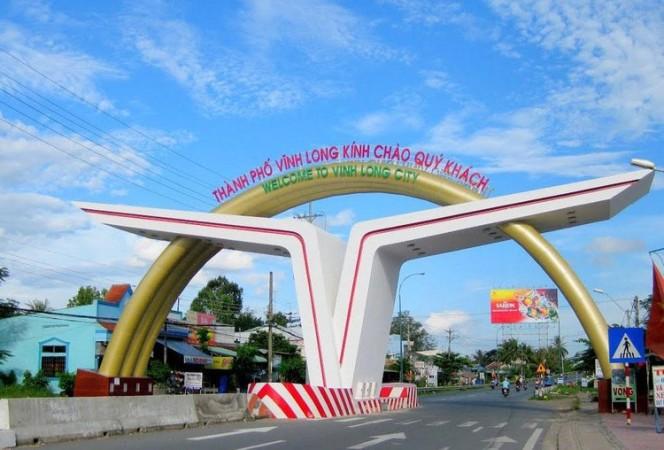
Overview of Vinh Long
History & Culture Influence
Vinh Long boasts a history as deep and meandering as its rivers. Founded in the 18th century, the province has played a pivotal role in Vietnam’s southern expansion. The name "Vinh Long" itself means "eternal prosperity," reflecting the hopes of the early settlers. The province was an important outpost during the Nguyen Dynasty and later during the French colonial period. Vinh Long has witnessed the rise and fall of empires over the years, and the traditions of the Vietnamese, Khmer, and Chinese communities have left their mark on its landscape. The influence of these diverse groups can be seen in the architecture of local temples, the unique culinary offerings, and the traditional crafts still practiced today.
Join our discovering tours in Vietnam to explore Vietnamese history and culture more.
Interaction with The Locals
The citizens of Vinh Long are primarily of Vietnamese ethnicity, with a significant presence of Khmer and Chinese communities. The locals are known for their warmth, friendliness, and strong sense of community, reflecting the province's rich cultural diversity and deep-rooted traditions. Most of the population lives in rural areas, engaging in agriculture, particularly in rice farming and fruit cultivation, which are central to the region's economy and way of life.
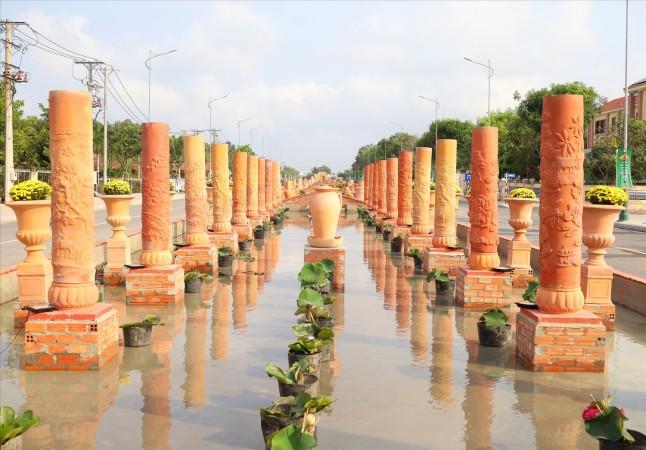
The Red Pottery and Flower Path in the center of Vinh Long city - © Vietnam Ethnicity & Development News
Top Attractions in Vinh Long
Vinh Long may be off the beaten path, but it’s home to several must-visit attractions that capture the essence of the Mekong Delta. These attractions, each with its unique charm, provide a glimpse into the natural beauty and cultural richness of Vinh Long.
- Long Ho Temple: This historic temple is a significant religious site in Vinh Long, offering insight into local Buddhist practices. The temple's exquisite construction and quiet ambiance provide a pleasant setting for introspection and cultural discovery.
- Binh Hoa Phuoc Village: Known for its traditional craft villages, Binh Hoa Phuoc offers visitors a glimpse into local handicrafts like coconut carving and pottery. The village is also famous for its scenic views and tranquil atmosphere.
- Van Thanh Mieu Temple: This historic temple, dedicated to Confucius, is a testament to Vinh Long’s rich cultural heritage. The temple’s serene setting and traditional architecture make it a peaceful stop for those interested in Vietnamese spiritual practices.
- My Thuan Bridge: My Thuan Bridge, an iconic symbol of Vinh Long, spans the Tien River and connects Vinh Long to Tien Giang Province. The bridge serves as both a crucial transit link and a popular shooting location, particularly after sunset.
- Tan Ngai Floating Market: A bustling floating market where you can experience the traditional way of trading goods on the water. It’s an excellent spot to observe local life and sample fresh tropical fruits.
- Vinh Long Market: This bustling market is a vibrant showcase of local produce, including exotic fruits, vegetables, and traditional foods. It's an ideal spot to immerse yourself in the local culture and sample fresh, authentic Vietnamese cuisine.
- Phat Ngoc Pagoda: Located in the heart of Vinh Long, Phat Ngoc Pagoda is renowned for its impressive architecture and tranquil setting. The pagoda features intricate carvings and a serene atmosphere, making it a significant spiritual site and a peaceful spot for reflection. Spiritual travel is very popular with tourists when visiting Vietnam, check out other local areas that offer unique spiritual activities.
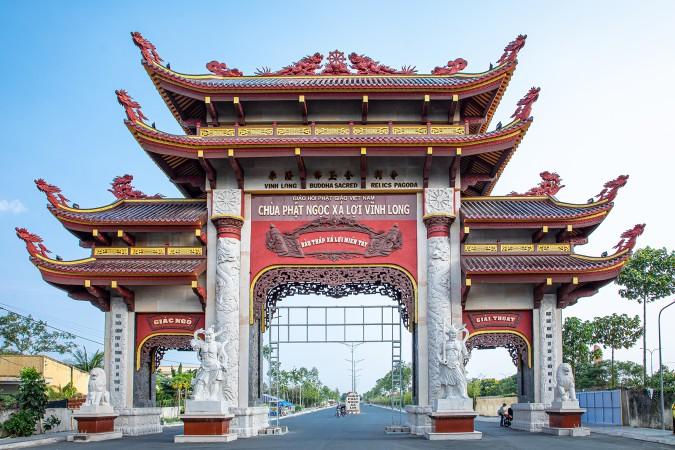
Phat Ngoc Pagoda - © Vietnam Tourism
Must-Try Dishes in Vinh Long
Vinh Long offers a culinary journey that reflects the rich biodiversity and cultural heritage of the Mekong Delta. These additional dishes provide a deeper insight into Vinh Long’s culinary diversity, offering visitors a truly immersive gastronomic experience in the heart of the Mekong Delta.
- Lau Ca Keo (Spiny Goby Hot Pot): This hotpot dish features the slender Ca Keo fish, a local delicacy, cooked in a flavorful broth with tamarind, herbs, and vegetables. The soup is tangy and aromatic, offering a refreshing balance of flavors.
- Ca Loc Nuong Trui (Grilled Snakehead Fish): A rustic dish that embodies the essence of the Mekong Delta, Ca Loc Nuong Trui is made by grilling a whole snakehead fish over an open flame. The fish is charred on the outside but tender on the inside and is typically served with rice paper, fresh herbs, and a sweet-sour dipping sauce.
- Banh Cong (Fried Shrimp Cake): Originating from the Khmer community in the Mekong Delta, Banh Cong is a crispy, deep-fried cake made from rice flour, mung beans, and shrimp. It’s often enjoyed as a snack or appetizer, served with fresh herbs and fish sauce.
- Canh Chua Ca Linh (Ca Linh Sour Soup): This sweet and sour soup is made with Linh fish, a seasonal specialty, and is flavored with tamarind, pineapple, tomatoes, and a variety of herbs. The soup is a perfect blend of sweet, sour, and savory flavors, representing the essence of Mekong Delta cuisine.
- Kho Quet (Vietnamese Caramelized Fish Sauce): A popular side dish in Vinh Long, Kho Quet is a caramelized fish sauce dip, thick and flavorful, often served with boiled vegetables. It’s a simple yet highly addictive dish that pairs well with steamed rice.
- Che Troi Nuoc (Rice Ball Sweet Soup): For dessert, try Che Troi Nuoc, a traditional Vietnamese sweet soup made of glutinous rice balls filled with mung bean paste, cooked in a sweet ginger syrup. It’s warm, comforting, and a perfect end to a meal.
Craving Vietnamese food? Discover more about Vietnam cuisine here.
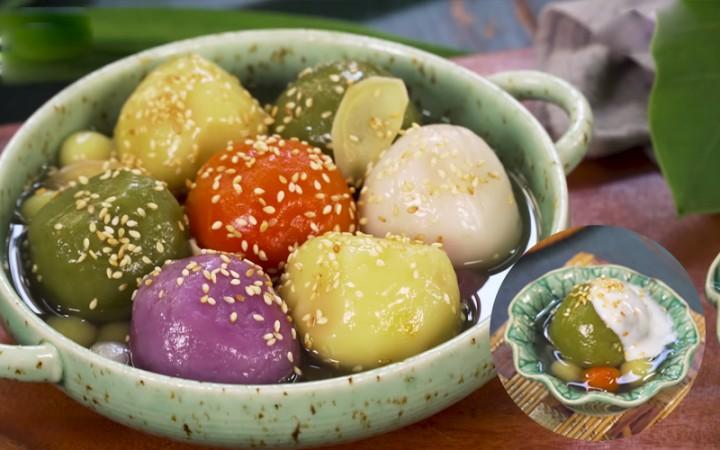
Che Troi Nuoc (Rice Ball Sweet Soup) - © EVA
Festivals & Local Celebrations
Vinh Long is a province where tradition and community are celebrated with vibrant festivals and local events throughout the year. These festivities offer visitors a chance to experience the region’s culture firsthand.
Ooc Om Boc
This traditional Khmer festival, celebrated by the Khmer community in Vinh Long, honors the moon deity and the end of the rainy season. It features boat racing, traditional dances, and offerings of sticky rice and coconut, creating a festive atmosphere that’s both colorful and spiritual.
Chol Chnam Thmay (Khmer New Year)
This is a significant celebration for the Khmer community in Vinh Long, usually held in mid-April. The Chol Chnam Thmay festival marks the Khmer New Year and includes various activities such as traditional games, music, and dance performances. Pagodas become the focal point of the festivities, where people gather to offer prayers and make merit.
Ky Yen Festival
The Ky Yen Festival is a traditional event celebrated in various communes across Vinh Long, typically held in honor of the village's tutelary god. It’s a time for locals to pray for peace, prosperity, and good weather. The celebration includes ancient rites including incense offerings, processions, and cultural displays like lion dances and folk music.
Don Ca Tai Tu Festival
While not as well-known as other festivals, the Don Ca Tai Tu Festival is a celebration of southern Vietnamese folk music, which is an important aspect of Vinh Long's cultural identity. The festival features performances of Don Ca Tai Tu music, a traditional genre that’s recognized by UNESCO as an Intangible Cultural Heritage. Musicians from across the Mekong Delta come together to perform, preserving this important cultural practice.
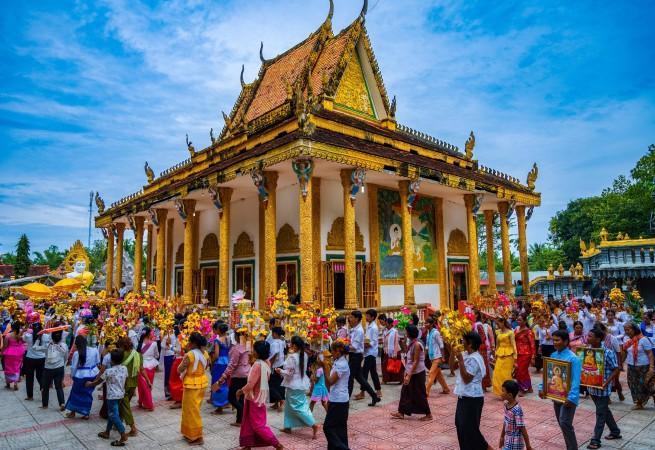
Chol Chnam Thmay (Khmer New Year) - © Vietnam.vn
What to Do in Vinh Long
Whether you’re an adventurer, a culture enthusiast, or simply looking to unwind, Vinh Long offers a variety of activities that cater to all types of travelers. These activities offer a well-rounded experience of Vinh Long, blending adventure, culture, and relaxation in the heart of the Mekong Delta.
- Fruit Orchards Cycle Tours: Explore the lush landscapes of Vinh Long on two wheels. Cycling through the province’s extensive orchards and rural paths allows you to take in the natural beauty at your own pace. Stop by local farms to taste fresh fruits and interact with farmers.
- Mekong River Boat Tours: A boat tour is a quintessential Vinh Long experience. Cruise through the intricate network of rivers and canals, visit floating markets, and witness life on the water. The slow pace of the boat ride offers a relaxing way to see the province’s scenic beauty.
- Visit Traditional Craft Villages: Vinh Long is home to several traditional craft villages where visitors can observe and participate in the making of pottery, rice paper, and bamboo products. These hands-on experiences are a great way to learn about the region’s artisanal heritage.
Shopping in Vinh Long
Vinh Long offers a vibrant shopping experience that reflects the local culture and traditions of the Mekong Delta. Visitors can explore bustling markets, quaint shops, and unique handicraft villages, each offering a glimpse into the region's rich heritage.
- Vinh Long Market: Located in the heart of the city, Vinh Long Market is a must-visit for those looking to experience the local way of life. Here, you'll find an array of fresh produce, from tropical fruits to Mekong River fish. The market is also a great place to shop for traditional Vietnamese garments, souvenirs, and local specialties like dried fruits and candies.
- Vinh Long Night Market: As the sun sets, the Vinh Long Night Market comes alive with vendors selling a variety of street food, clothing, and accessories. It's a lively spot to enjoy the local cuisine and pick up affordable gifts for friends and family.
- Local Specialty Shops: Don't miss the opportunity to bring home some of Vinh Long's famous specialties, such as Nam Roi grapefruit, Cai Mon durian, or the unique taste of Vinh Long's coconut candy. These can be found in specialty shops across the province.
If you have time to get to the nearby province, make sure to visit My Tho, another culture-rich area in Vietnam. Learn all about My Tho here.
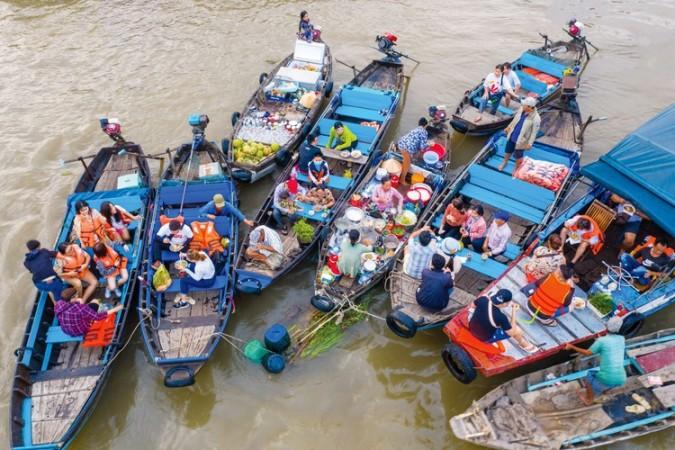
Mekong River Boat Tours - © VietnamNet
Weather in Vinh Long: Best time to Visit
Wet Season in Vinh Long
- Weather: During the rainy season, Vinh Long experiences warm temperatures ranging from 25°C to 30°C (77°F to 86°F) with high humidity. Frequent, short, and intense showers characterize this period, often occurring in the afternoon or evening. The Mekong Delta becomes lush and vibrant, showcasing its natural beauty in full bloom.
- Tourism Trend: The wet season is ideal for travelers who enjoy fewer crowds and lower prices. The lush green landscapes and swollen rivers create picturesque scenes perfect for photography and boat tours. The rain often cools down the temperature, providing a refreshing respite from the heat. However, it’s advisable to pack waterproof gear and plan for indoor activities during heavy rain.
Dry Season in Vinh Long
- Weather: The dry season brings warm and pleasant weather, with temperatures typically ranging between 27°C to 32°C (81°F to 90°F). Humidity levels drop, and the skies are mostly clear, making it an excellent time for outdoor activities. The Mekong Delta's rivers recede slightly, making boat travel easier and more comfortable.
- Tourism Trend: This is the peak tourist season in Vinh Long, attracting visitors who want to experience the province’s vibrant markets, fruit orchards, and cultural sites under clear skies. The dry weather is perfect for cycling tours, exploring traditional villages, and attending local festivals. Accommodations and activities may be more expensive, and attractions are busier, so booking in advance is recommended.
The dry season is a favourable time to visit many regions in southern Vietnam, such as Sa Dec and Vinh Long. Learn more about Sa Dec here.
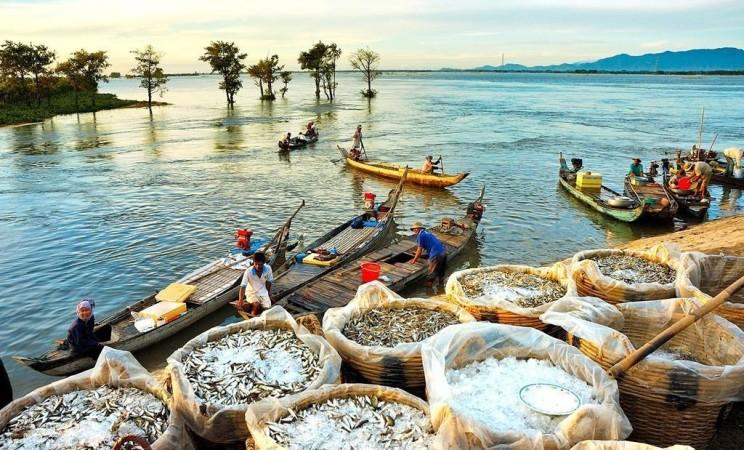
Wet season in Vinh Long is when its natural beauty in full bloom - © VnExpress
Essential Travel Information
Getting Around Vinh Long
- Motorbike: Renting a motorbike is one of the most popular ways to explore Vinh Long. It offers flexibility and the freedom to discover hidden gems at your own pace. While the roads are generally safe for riding, you should be cautious during the rainy season.
- Bicycle: For a more immersive experience, consider renting a bicycle. Cycling through Vinh Long's lush countryside, past rice paddies and fruit orchards, allows you to soak in the serene atmosphere and interact with locals along the way.
- Boat: Given Vinh Long's location in the Mekong Delta, traveling by boat is a quintessential part of the experience. You can visit floating markets, local villages, and scenic spots along the rivers and canals.
- Taxi: Taxis are readily available in Vinh Long, and they offer a comfortable way to get around, especially for longer distances or when traveling with luggage.
- Public Buses: For budget-conscious travelers, public buses are an option. They connect Vinh Long with other major cities in the Mekong Delta, as well as within the province itself.
- Walking: In the city center, walking is a pleasant way to explore Vinh Long's markets, shops, and attractions. The town is compact, making it easy to navigate on foot.
ATM & Banking Services in Vinh Long
Vinh Long offers convenient banking services with numerous ATMs available in the city center and tourist areas. These ATMs accept international cards, such as Visa, MasterCard, and UnionPay, dispensing Vietnamese Dong (VND). Most banks provide additional services like currency exchange, money transfers, and cash advances. While ATMs are a handy option, having some cash is useful for transactions in more remote areas or smaller establishments where card payments may not be accepted.
Where to Stay in Vinh Long
- Homestays: These accommodations allow you to live with a local family, providing insight into daily living in the Mekong Delta. Staying at a homestay is a great way to immerse yourself in the culture, enjoy home-cooked meals, and learn about local customs.
- Hotels and Guesthouses: There are various hotels and guesthouses in Vinh Long, ranging from budget-friendly options to more comfortable mid-range hotels. Many of these establishments are located in the city center, making it easy to access markets, restaurants, and attractions.
- Resorts: For a more luxurious stay, you can opt for one of the resorts located on the outskirts of Vinh Long or on nearby islands. These resorts often feature beautiful surroundings, such as river views or lush gardens, and offer amenities like swimming pools, spa services, and gourmet dining.
Articles for you

Explore Yala National Park - Sri Lanka Travel, Asia
Tucked away in Sri Lanka’s southeastern corner, Yala National Park is where wild nature meets deep tradition. Known worldwide for its leopard population, the park is also home to elephants, sloth bears, crocodiles, and hundreds of bird species. Beyond wildlife, Yala opens doors to a cultural landscape dotted with ancient temples, Buddhist ruins, and coastal villages. For travelers seeking more than just a safari, Yala offers a chance to explore eco-tourism, local communities, and sacred heritage sites.
Population: The Yala National Park area doesn’t have a human population.
Economy: The economy around Yala National Park thrives on a blend of eco-tourism, agriculture, and local services. Safari tours, eco-lodges, and cultural experiences drive steady income for nearby towns like Tissamaharama and Kataragama, supporting thousands of families.
Landmarks: Famous for Block I of Yala and wildlife encounters, including elephants, sloth bears, crocodiles, and exotic bird species.

Explore Galle - Sri Lanka Travel, Asia
Nestled on Sri Lanka’s southern coastline, Galle is a vibrant city where history meets the sea. Its cobbled streets, colonial architecture, and serene beaches make it a must-visit destination for travelers seeking a blend of culture, adventure, and relaxation. A UNESCO World Heritage site, Galle captivates visitors with its Dutch Fort, bustling markets, and friendly locals. Whether you’re exploring the ramparts at sunset or savoring fresh seafood by the shore, Galle promises an unforgettable journey into Sri Lanka’s heritage.
Population: Approximately 113,000 in 2023.
Economy: Galle’s economy thrives on tourism, trade, and fisheries. The city’s historic fort, colonial architecture, and coastal charm draw thousands of international visitors each year, making tourism its main economic driver. Fishing remains vital for local livelihoods, supplying fresh seafood across the region.
Landmarks: Famous for the Galle Fort, Dutch Reformed Church & Maritime Museum, and Unawatuna Beach.

Explore Bentota - Sri Lanka Travel, Asia
Nestled along Sri Lanka’s southwestern coast, Bentota is a tropical paradise that blends golden beaches, vibrant culture, and thrilling adventures. Famous for its calm waters, luxury resorts, and scenic river estuary, Bentota has become a top destination for travelers seeking both relaxation and authentic experiences. From serene beach walks at sunrise to adrenaline-pumping water sports, this coastal town offers a perfect balance of leisure and exploration. With its proximity to Colombo and Galle, Bentota is easy to reach, making it an ideal stop for both short escapes and extended holidays.
Population: Approximately 37,000 in 2023.
Economy: Bentota’s economy thrives mainly on tourism, which drives local businesses such as hotels, restaurants, and wellness retreats. The town also benefits from fishing, coconut cultivation, and handicrafts like wood carving and batik textiles. Many residents rely on the growing demand for water sports and Ayurvedic treatments, making tourism the backbone of both income and employment in the area.
Landmarks: Famous for Bentota Beach, Bentota River Safari, and Kande Vihara Temple.

Explore Mirissa - Sri Lanka Travel, Asia
Mirissa is a charming coastal town on Sri Lanka’s southern shoreline. Known for its golden beaches, turquoise waters, and vibrant marine life, it has become a must-visit stop for travelers exploring the island. Many come for whale watching, surfing, and sunset views at Coconut Tree Hill, but Mirissa offers much more than postcard beauty. The fishing boats you see anchored by the bay carry generations of stories. Local traditions, delicious cuisine, and a laid-back rhythm of life shape every visitor’s experience.
Population: Approximately 4,700 in 2023.
Economy: Mirissa’s economy is largely shaped by its coastal location. Fishing has long been the backbone of local livelihoods, with generations relying on the Indian Ocean for income. In recent decades, tourism has become the main driver of growth, thanks to whale watching, surfing, and beachside hospitality.
Landmarks: Famous for Mirissa Beach, Coconut Tree Hill, and Parrot Rock Bridge.

Explore Nuwara Eliya - Sri Lanka Travel, Asia
Tucked away in the Central Highlands of Sri Lanka, Nuwara Eliya is often called “Little England”. With its rolling tea plantations, cool misty mornings, and colonial charm, this mountain town feels like a step into another world. Travelers come here to breathe fresh air, walk through flower gardens, sip the finest Ceylon Tea, and enjoy a pace of life far from the island’s busy cities. Whether you’re drawn by scenic landscapes, heritage architecture, or the warmth of its people, Nuwara Eliya is a destination that blends nature, culture, and history in perfect harmony.
Population: Approximately 781,000 in 2023.
Economy: Nuwara Eliya’s economy thrives mainly on tea production, as it sits in the heart of Sri Lanka’s central highlands, famous worldwide for Ceylon Tea. The city also benefits from a growing tourism industry, attracting visitors with its colonial charm, cool climate, and scenic landscapes.
Landmarks: Famous for Gregory Lake, Hakgala Botanical Garden, and Victoria Park.

Explore Sukau - Malaysia Travel, Asia
Nestled on the banks of the Kinabatangan River in Sabah, Malaysian Borneo, Sukau is a destination where wildlife, culture, and conservation come together. Known as one of Asia’s top spots for river safaris and eco-tourism, this quiet village offers a front-row seat to encounters with Bornean orangutans, pygmy elephants, proboscis monkeys, and exotic birdlife.
Population: Approximately 1,400 in 2019.
Economy: Sukau’s economy is shaped by its riverine location and natural resources. Traditionally, the Orang Sungai community relied on fishing, small-scale farming, and forest gathering for their livelihood. Today, the village has shifted toward eco-tourism, with river cruises, jungle trekking, and homestays providing income.
Landmarks: Famous for the Kinabatangan River cruises, Gomantong Caves, and Ox-bow lakes and wetlands.
